Research
Aerothermodynamics
Supersonic retropropulsion
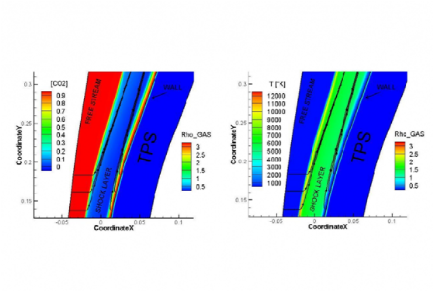
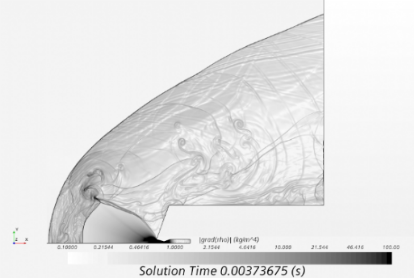
The word “aerothermodynamics” is a mixture between the words “aerodynamics” and “thermodynamics”. In the aerospace community jargon, it indicates the study of the motion of a gas (typically air for Earth applications, but other gas mixtures for extra-terrestrial applications) where “high-temperature” phenomena are important. In fact, in a high-speed flow, there are regions in the flowfield where temperature is extremely high, so that thermo-chemical processes occur that are strong enough to influence, or even dominate, the flow-field characteristics. Thermo-chemical processes include internal energy excitation, chemical reactions, ionization, radiation, gas/surface interactions.
The study of aerothermodynamics is particularly important during the entry phase of a space vehicle into a planetary atmosphere. Such an entry occurs initially at very high speed (Mach number of 25 or even larger), in a regime that is called “hypersonic regime” (Mach number above 5). In this sense, “aerothermodynamics” and “hypersonic aerodynamics” are two almost equivalent terms. In the first one, the stress is upon high-temperature effects, in the second one, the high-speed nature of the flow is put in evidence.
Next missions to Mars, either advanced robotic or human, will require landed masses larger than one ton. At this time, no existing technology is capable of landing these large payload on the Mars surface. Supersonic retropropulsion (SRP) appears to be the most promising Entry, Descent and Landing (EDL) technology to this aim. Retropropulsion has already been used for decelerating space capsules during Mars landing, but within the subsonic regime. Extending the propulsive capability to the supersonic regime is object of current research. Since September 2013, SpaceX is successfully performing supersonic retropropulsion to decelerate the reentry on Earth of the first stage of their Falcon 9 rocket. Part of the SRP maneuver occurs in Mars relevant conditions. My research activity on the subject is focused on CFD analysis of supersonic retropropulsion, with the aim of understanding the flow characterstics to evaluate SRP risks and design appropriate vehicle configurations. At this time, two of my students are working on their Master Thesis on the subject. I am carrying out this research activity in cooperation with my collegue prof. Roberto Marsilio.
For a broad introduction to supersonic retropropulsion, I suggest reading


Aerial drones aerodynamics
Surfboard hydrodynamics
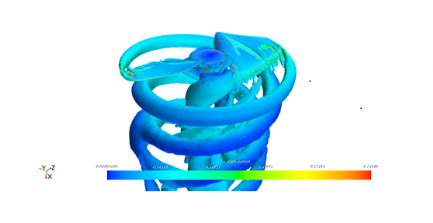
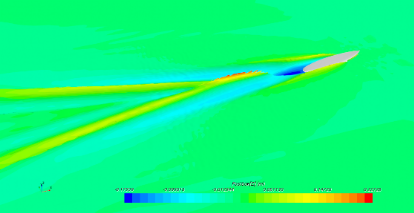
Aerial drones, also known as Unmanned Aerial Vehicles (UAVs), Miniature Pilotless Aircraft, Flying Mini Robots or Unmanned Aircraft Systems (UASs) are a rapidly growing technology. In the past few years, they gained a central role in various businesses and governmental organizations and their technolgy is constantly evolving and improving.
From the aerodynamics point of view, the most interesting research areas at this time concern Nano Air Vehicles (NAVs) for Earth based applications, bio-inspired NAVs with flapping wings and aerial drones for planetary exploration. Due to their small dimensions, Nano Air Vehicles fly in the Low Reynolds number regime (low-Re), that is mostly in laminar flow conditions. This has strong impications in the design of propellers that are normally use to sustain their flight. In addition, low-Re flight is typical of insects, whose flapping wing aerodynamics is not completely understood. The low-Re regime is also encountered by aerial vehicles that will fly in the Mars atmosphere, such as the Mars Helicopter Ingenuity that is currenly traveling to Mars inside the Perseverance rover as part of the NASA Mars 2020 mission. In this case, the low-Re regime is met not because of the drone dimensions, but due to the low density of the Mars atmosphere.
I am carrying out research activity on the subject since a couple of years with the precious help of my PhD student, Manuel Carreno Ruiz, whose research work is focused on UASs aerodynamics. In particular, we are presenlty working on the design of optimal low-Re propellers for NAVs, Earth high-altitude and Mars atmosphere applications and also in the design of drones conventional for agricultural applications. Part of this activity is being carried out in cooperation with my collegue prof. Giorgio Guglieri and his research group.
Computational Fluid Dynamics is recently being considered as an interesting tool to predict and analyze surfboards hydrodynamic characteristics with the purpose of optimizing the design. Surfboard hydrodynamics is a complex subject due to the extremely large number of degrees of freedom that characterize the problem. For example, the same surfboard can be ridden by different surfers (different weight, inertia, feet distance) with different style (time varying force and application points) on different waves (variable speed, steepness, etc.). Few publications are present in the literature at this time. I am studying surfboards hydrodynamics since about one year. The first results have been published in the paper
I am still carrying out this research activity with some students in the framework of their Master Thesis (I will add link as soon as the theses are completed).


Sports aerodynamics
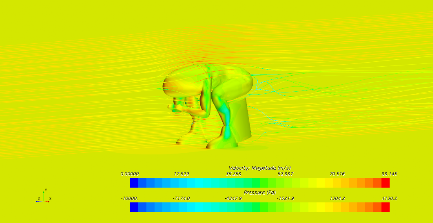
Aerodynamic forces are an important factor in any sport that is based on throwing a projectile through air. Ball sports, such as golf, soccer, football, baseball and tennis are typical examples. Velocity sports where athletes move at high speed are also dominated by aerodynamics. These include, for example, speed skydiving, speed skiing, ski jumping.
I recently supervised an interesting Master thesis focusing on speed skiing. The thesis (in Italian) can be downloaded here.

